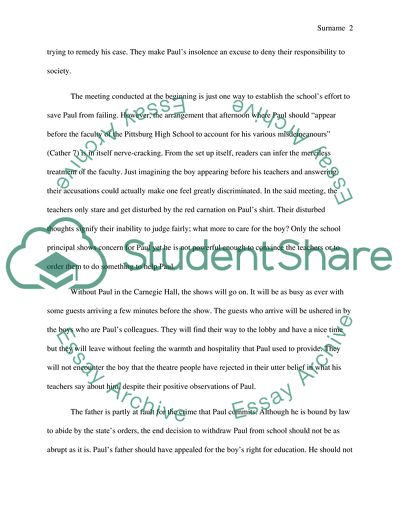Cite this document
(The Society and Its Responsibility in Willa Cather's Paul's Case Book Report/Review Example | Topics and Well Written Essays - 2250 words, n.d.)
The Society and Its Responsibility in Willa Cather's Paul's Case Book Report/Review Example | Topics and Well Written Essays - 2250 words. https://studentshare.org/sociology/1872854-sociology-based-paper-on-pauls-case-by-willa-cather
The Society and Its Responsibility in Willa Cather's Paul's Case Book Report/Review Example | Topics and Well Written Essays - 2250 words. https://studentshare.org/sociology/1872854-sociology-based-paper-on-pauls-case-by-willa-cather
(The Society and Its Responsibility in Willa Cather's Paul'S Case Book Report/Review Example | Topics and Well Written Essays - 2250 Words)
The Society and Its Responsibility in Willa Cather's Paul'S Case Book Report/Review Example | Topics and Well Written Essays - 2250 Words. https://studentshare.org/sociology/1872854-sociology-based-paper-on-pauls-case-by-willa-cather.
The Society and Its Responsibility in Willa Cather's Paul'S Case Book Report/Review Example | Topics and Well Written Essays - 2250 Words. https://studentshare.org/sociology/1872854-sociology-based-paper-on-pauls-case-by-willa-cather.
“The Society and Its Responsibility in Willa Cather's Paul'S Case Book Report/Review Example | Topics and Well Written Essays - 2250 Words”. https://studentshare.org/sociology/1872854-sociology-based-paper-on-pauls-case-by-willa-cather.


